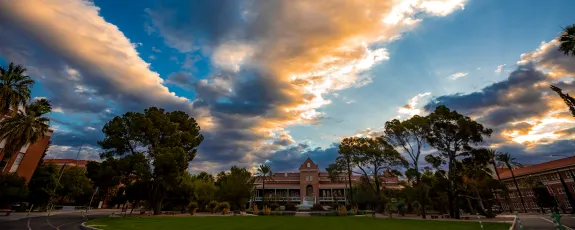
School of Earth & Environmental Sciences
Welcome to SEES!
The School of Earth and Environmental Sciences is a federation of units that produces knowledge about earth and environmental processes and human-environment interactions at all geographic and temporal scales. SEES faculty and researchers provide the scientific basis for environmental and climate policy, train the next generation of scientists, and disseminate knowledge and solutions for the benefit of society.
About us
SEES produces new knowledge about earth and environmental processes and human-environment interactions at all geographic and temporal scales, provides the scientific basis for environmental and climate policy, trains the next generation of earth and environmental scientists, and disseminates knowledge and solutions for the benefit of students and society. The combination of field, instrumental, computational, and modeling approaches in the earth and environmental sciences within one unit is a major strength. SEES facilitates interdisciplinary research, teaching, and outreach/extension activities across the six departments and laboratories.
The numbers - 86 faculty, 210 graduate students, 230 undergraduate majors, 26,000 student credit hours and more than $17 million in external funding. We are ranked #2 nationally in funding from NSF's Division of Earth Sciences.
SEES is a federation of the College of Science Departments of Hydrology and Atmospheric Sciences, Geosciences, and the Laboratory of Tree-Ring Research, the College of Agriculture and Life Sciences' Department of Environmental Science, the School of Natural Resources and the Environment, and the College of Social and Behavioral Sciences' School of Geography, Development & Environment.
Management is by an executive council of the participating unit heads, with one of the heads serving as the Director, rotating annually. The participating units retain their existing governance, academic programs, and identities.
The Acting Director for SEES 2024-2025 Fiscal Year is Joan Curry, Interim Head with Environmental Science.
SEES offers undergraduate degrees in Environmental Science, Environmental Studies, Food Studies, Geography, Geographic Information Science Technology, Geosciences, Hydrology & Atmospheric Sciences, and Urban & Regional Development. Master’s and PhD degrees are offered in Development Practice, Environmental Science, Geography, Geographic Information Science Technology, Geosciences, Hydrology & Atmospheric Sciences, and Natural Resources. Tree-Ring students are granted degrees by SEES departments and those in other colleges.
Geography, Geosciences, Hydrology & Atmospheric Sciences, and Environmental Science are nationally ranked in the "top ten" in their fields and the Laboratory for Tree-Ring Research is renowned as the global leader in many applications of dendrochronology in environmental sciences. Aligning these units in the School provides a coherent and recognizable UArizona program with unique capabilities in earth, environmental, water, atmospheric, and sustainability sciences and their societal dimensions. SEES puts UArizona in a better position to compete for funding for major initiatives in climate research, water quality and supply, earth resources, and human dimensions of environmental change. SEES has the ability to quickly assemble interdisciplinary teams of faculty and researchers to work with the public and private sectors to solve the grand challenges facing the earth, our environment and society.
